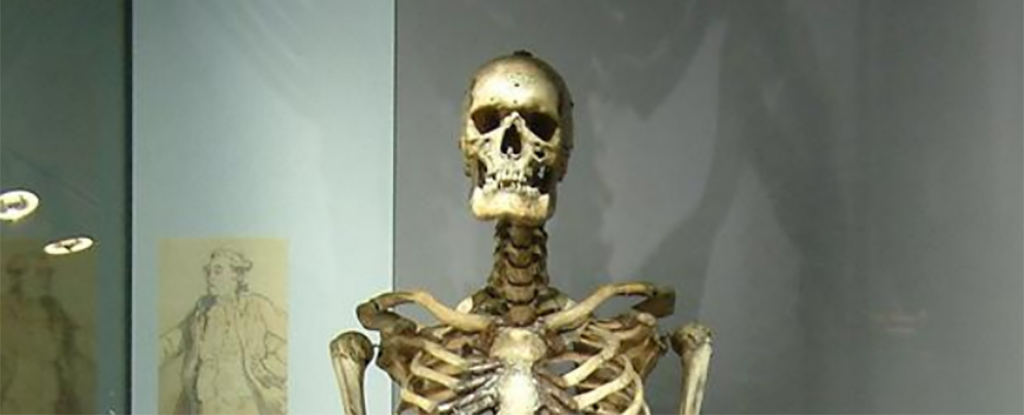After more than 200 years on public display, the 2.31 meter tall skeleton of the “Irish giant” Charles Byrn removed as an exhibit from the Hunterian Museum in London.
Byrne had an undiagnosed benign tumor of the pituitary gland, resulting in an overabundance of endogenous growth hormone and gigantism.
The display of his skeleton has always been controversial – not least because the man himself has been shown to fear such a fate and said he wants to be buried at sea – to put his remains out of reach of the notorious curator of medical curiosities, John Hunter.
However, a burial at sea will not take place as the Royal College of Surgeons, which runs the Hunterian Museum, says it will keep the skeleton for real research projects. The museum is currently closed for major renovations and will reopen in March.
“During the museum’s closure, the Hunterian Collection Board of Trustees discussed the sensitivities and differing views surrounding the display and preservation of Charles Byrne’s skeleton,” the museum said in a statement to the press.
“The trustees agreed that Charles Byrne’s skeleton will not be displayed in the rehabilitated Hunterian Museum but will continue to be available for genuine medical research into the condition of pituitary acromegaly and gigantism.”
Byrne’s story is filled with drama and interest. He was born Charles O’Brien in Mid Ulster, Northern Ireland, in 1761. After arriving in London at the age of 21, he quickly became one of the biggest celebrities of his time, entertaining crowds and appearing in newspapers.
However, at the age of 22, his health rapidly deteriorated. He died in 1783 and was determined not to have his body stolen by anatomists, particularly the surgeon John Hunter. Known for collecting unusual specimens for the exhibition, Hunter had already been approached and turned down by Byrne.
Although Bryne had paid friends to put his remains in a lead coffin and bury them in the sea, Hunter made sure the body was snatched and replaced with heavy rocks. The body was then boiled down to the skeleton and displayed in Hunter’s own museum four years later. It was bought by the Royal College of Surgeons in 1799.
This story of body snatching has led to this repeated calls that the skeleton will be removed from the exhibition for legal and ethical reasons – and that is certainly no longer imaginable today.
Len Doyal, a professor of medical ethics at the University of London, and Thomas Muinzer, a solicitor at the University of Aberdeen, have been among those calling for a rethink in recent years.
“The fact is that Hunter knew Byrne’s fear of him and ignored his desire to dispose of his body,” Doyal and Muinzer wrote in a 2011 article in The BMJ.
“What has been done cannot be undone, but it can be morally corrected. Certainly it is time to respect Byrne’s memory and reputation: the narrative of his life, including the circumstances of his death.”
While the museum and its owners aren’t doing exactly what Byrne originally wanted, they are at least removing the skeleton as a public spectacle. As of now, only medical researchers can access it.
The remains are being replaced in the Hunterian Museum with a painting of Hunter by the famous English painter Joshua Reynolds. The portrait includes one of Charles Byrne’s leg bones in the background.
According to Byrne’s distant relative Brendan Holland, the decision is correct: he shares a common ancestor with the Byrnes and also has gigantism. Holland notes the progress made in understanding the condition thanks to Byrne’s skeleton.
“It has been good for the living, those affected now know why they have it and how to treat it,” Holland said BBC.
“I think, if [Byrne] was alive he would consent to this as it can be life threatening.”





